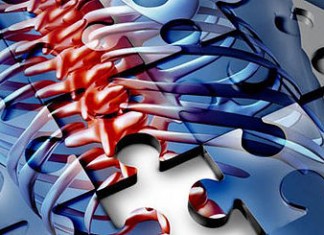Abstract Background: Autism is a complex, behaviorally defined disorder of the immature brain. Autism is not a disease but a syndrome with multiple non-genetic and genetic causes. Autistic Spectrum Disorders (ASD) is a wide spectrum of developmental disorders characterized by impairments in 3 behavioral domains: 1) social interaction; 2) language, communication, and imaginative play; and 3) range of interests and activities. There are two basic types of autism: autism from birth (classic autism once known as Kanner’s Syndrome) and regressive autism, which generally occurs between 12 and 24 months of age after a period of normal development and behavior. The incidence of autism from birth is low, approximately one or two out of 10,000 births. However, the incidence of regressive autism and associated ASDs has soared. A recent study indicates that as many as 1 out of 150 California children may have regressive ASD. A similar figure was reported by the Center for Disease Control (CDC) in a study of a township on the East Coast of the United States. ASD is of great concern to all healthcare practitioners because of an astonishing 556% reported increase in pediatric prevalence between 1991 and 1997. The clinical management of ASD requires a multidisciplinary approach, consisting primarily of speech, language, behavioral, and educational interventions although, “ there is a lack of clinically based evidence on which to universally recommend a rational clinical algorithm for treatment.” The rising incidence of ASD and the lack of well-documented treatment options should be a “matter of urgent public concern.” The role of chiropractic in the treatment of children with ASD has not been well documented in the scientific literature. This case study will address this deficit and examine the role of chiropractic care in the treatment algorithm for a patient with ASD.
Objective: To describe the role of chiropractic care in the management of a patient with autistic spectrum disorder.
Clinical features: A four-year-old boy was diagnosed with autism at 23 months. His mother presented him for chiropractic evaluation and possible care with the hope that chiropractic care might help his frequent ear infections. The mother also reported that the child was very active but his speech and communication skills were a challenge.
Intervention and Outcome: The patient was cared for using the Webster toggle headpiece and Logan Basic technique to the cervical spine and sacrum. According to the patient’s mother, her little boy’s speech and ability to communicate improved dramatically following adjustments.
Conclusion: This case report provides supporting evidence that patients with ASD may benefit from chiropractic care characterized as Toggle Recoil and Logan Technique. This case report encourages further investigation into the role of chiropractic care in the integrative management of patients with autism.
Blocked atlantal nerve syndrome in infants and small children. Gutman G. ICA Review, 1990; July:37-42. Originally published in German Manuelle Medizin (1987) 25:5-10.
From the abstract: Three case reports are reviewed to illustrate a syndrome that has so far received far too little attention, which is caused and perpetuated in babies and infants by blocked nerve impulses at the atlas. Included in the clinical picture are lowered resistance to infections, especially to ear-, nose-, and throat infections, two cases of insomnia, two cases of cranial bone asymmetry, and one case each of torticollis, retarded locomotor development, retarded linguistic development, conjunctivitis, tonsillitis, rhinitis, earache, extreme neck sensitivity, incipient scoliosis, delayed hip development, and seizures.
Joel Alcantara, DC (1) and Kim McCann-Swanson, DC, DACCP (2) Presented at Pangea: a Conference for the Wellness of Children.








